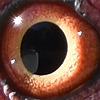HOME | DD
 TheBootesArtVoid — Lorikeet On A Pole (Wild)
TheBootesArtVoid — Lorikeet On A Pole (Wild)

#animal #animalphotography #animals #australia #australian #australiananimals #australianwildlife #bird #birds #lorikeet #lorikeets #natural #nature #naturephotography #parrot #parrots #photo #photography #wildlife #wildlifephotography #australianbirds #birdphotography #parrotbird #parrotlovers #wildlifereferencephoto #thebootesartvoid
Published: 2022-11-10 02:12:50 +0000 UTC; Views: 1349; Favourites: 87; Downloads: 0
Redirect to original
Description
Species Name: Rainbow lorikeet
Species Latin Name: Trichoglossus moluccanus
Native To: Australia, commonly fount along the Eastern Seaboard from northern Queensland to South Australia
Conservation Status: Least Concern
Photo Taken At: My Backyard
Size (length): 25-30 cm (9.8 to 11.8 inches)
Weight: 75-157g (2.6-5.5 oz)
Lifespan: 7-30 Years
Diet: Herbivore, frugivore, palynivore, nectarivore
Lifestyle: Arboreal, altricial, terrestial, nomadic, oviparous
Group Name: Flock, company, pandemonium
Female Name: Hen
Male Name: Cock
Baby Name: Chick
Reproductive Season: Varies with location
Incubation Period: 25 days
Independent Age: 10-12 weeks
Eggs Per Brood: 1-3 eggs
Broods Per Season: 1-3 broods
Age Of Sexual Maturity: 12-15 months
Description:
As the name would imply these birds are have vibrantly coloured feathers that resemble a living rainbow. These birds have black and blue feathers across their faces with orange beaks. Orange and yellow feathers will spread along their chest and a variety of colours on their stomach and legs. On their back and along their wings and tail a vibrant green will be displayed. Their eyes consist of a vibrant orange iris with a dark brown rim surrounding their black pupil. These birds are not sexually dimorphic so the males and females look identical to one another. The only way to determine the sex of these birds is with the assistance of a veterinarian or of the DNA testing of their feathers. The juveniles of these species will appear similar to the adults once their feathers have grown. The main exception the juveniles have to the adults are their black beaks, these beaks gradually brighten to the distinctive orange as they mature.
Diet:
These birds will primarily forage on the flowers of trees and shrubs to harvest the nectar and pollen within. These birds can also feed on various fruits and will sometimes eat various seeds and insects. The end of their tongues are specially adapted for feeding on nectar and pollen from flowers. In various places these wild lorikeets can become so used to human company that they can be hand fed. Though they can be hand fed it is important not to feed them food that strays from their natural diet especially foods such as bread. It is believed that feeding them such foods will damage their tongues which may prevent them from being able to feed on the nectar and pollen of flowers.
Behaviour:
These birds are monogamous and will often pair up for long periods of time if not for life. These birds will also flock together in large groups for a time before once more splitting up into the monogamous pairs to return to their respective territories. These birds are quite territorial and will often become aggressive against other smaller and larger birds. These birds nesting areas can vary. They can nest in the hollows of tall trees as well as overhanging rocks. Despite how territorial these birds can be it is known that they will sometimes nest in the same tree as other species or other Rainbow Lorikeets if the tree is large enough to accommodate more than one nest.
Further Reading (general information):
Wikipedia: en.wikipedia.org/wiki/Rainbow_…
Birdlife: www.birdlife.org.au/bird-profi…
Animalia: animalia.bio/rainbow-lorikeet
Australian Museum: australian.museum/learn/animal…
Birdfact: birdfact.com/birds/rainbow-lor…
Related content
Comments: 9

👍: 1 ⏩: 1

👍: 1 ⏩: 0

👍: 1 ⏩: 1

👍: 0 ⏩: 1

👍: 1 ⏩: 0

👍: 1 ⏩: 1

👍: 1 ⏩: 0

👍: 1 ⏩: 1

👍: 1 ⏩: 0


























